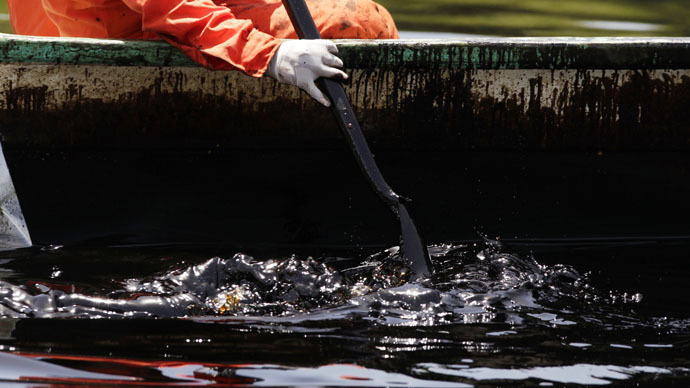2004 Gulf of Mexico oil spill could leak another 100 years - report

An oil leak that occurred when an offshore platform toppled during Hurricane Ivan in 2004 has continued to spill oil into the Gulf of Mexico – and could keep leaking for another 100 years, according to documents obtained by The Associated Press.
The documents show that a century-long leak could occur if nothing is done to address the problem.
The platform owners, Taylor Energy Company, tried to work with Department of the Interior "to resolve financial obligations for the leak" worth hundreds of millions of dollars, which were set aside to pay for leak-related work.
READ MORE: Shell Oil wins approval to drill in Arctic
However, the company has tried to cover up the extent of the damage to the ecology of the Gulf, and the government has been unwilling to renegotiate the costs to the Taylor. Instead, it ordered them to do more work on the matter.
"There is still more that can be done by Taylor to control and contain the oil that is discharged," said an Interior Department fact sheet obtained by AP.
It is suspected, by officials, that the leak is coming from at least one of 25 wells that were buried under mounds of sediment from an underwater mudslide that was triggered by waves during Hurricane Ivan. The company ordered new wells drilled in order to plug nine of the wells that were suspected could leak oil, but company officials cited experts to argue that the best course of action is do no further drilling because of risks.
In reviewing more than 2,300 Coast Guard pollution reports from 2008 onwards, the AP found that since September 1, 2014, the leaks have been getting greater. When they approached the Coast Guard about the uptick, reporters were provided with new estimates showing leaks 20 times greater than what the company claimed.
READ MORE: A drop in the ocean: Recovery projects worth $134 million proposed for BP oil spill
Taylor claimed the site was leaking 4 gallons per day, but revised Coast Guard estimates show "shines as large as 1.5 miles wide and 14 miles long." They also show daily oily discharges ranging from 42 gallons to as high as 2,300 gallons, with a daily average of 84 gallons.
AP said the company is now down to one full-time employee after its founder died, and it sold all its offshore leases and oil and gas interests in 2008.
A spokesman for the company declined to comment to AP on Friday.












